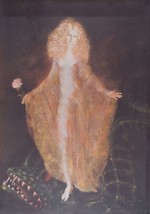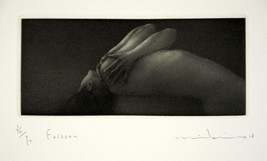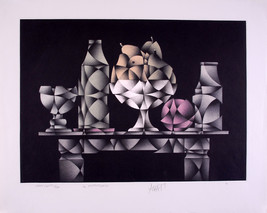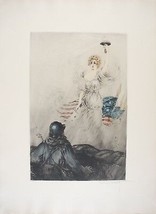Friedrich HUNDERTWASSER s/n Silkscreen Night and 50 similar items
Friedrich HUNDERTWASSER s/n Silkscreen Night train 1978
£7,887.25 GBP
View full item details »
Shipping options
Offer policy
OBO - Seller accepts offers on this item.
Details
Return policy
Partial refund available within 30 days
Purchase protection
Payment options
PayPal accepted
PayPal Credit accepted
Venmo accepted
PayPal, MasterCard, Visa, Discover, and American Express accepted
Maestro accepted
Amazon Pay accepted
Nuvei accepted
View full item details »
Shipping options
Offer policy
OBO - Seller accepts offers on this item.
Details
Return policy
Partial refund available within 30 days
Purchase protection
Payment options
PayPal accepted
PayPal Credit accepted
Venmo accepted
PayPal, MasterCard, Visa, Discover, and American Express accepted
Maestro accepted
Amazon Pay accepted
Nuvei accepted
Item traits
| Category: | |
|---|---|
| Quantity Available: |
Only one in stock, order soon |
| Condition: |
Unspecified by seller, may be new. |
Listing details
| Seller policies: | |
|---|---|
| Shipping discount: |
Shipping weights of all items added together for savings. |
| Posted for sale: |
More than a week ago |
| Item number: |
1682905812 |
Item description
Night train - Night train
Year of publication: 1978
Discipline: Prints
Technique: Screen printing
Edition: Numbered 98/285
Support: Vellum paper
Signature: Handwritten in Ink
Total Measurement: 55.5 x 73 cm
Image size: 51.5 x 73 cm
Package weight: 2kg
Ref #: LHundHWG72
Condition: Excellent and has never been framed
Description :
Original screenprint in 10 colors with metal stampings in 2 respectively 3 colors, dated and signed in ink.
- Bears number 98 of an edition limited to 285.
- Published by Gruener Janura AG, Glarus, Switzerland.
- Carried out by Claudio Barbato, Spinea-Venice, and by Giorgio Verrati, Venice, in 1978.
- Coordinator Alberto della Vecchia.
Rationale for the draw:
- 285 copies numbered 1/285 to 285/285 on Fabriano cotton paper.
- 90 proofs and trial collages numbered I/XC to XC/XC.
5 color variations.
Proofs No. 214/285 (variation 4) and 253/285 (variation 5) were made available to the author. Top left, screen no. 10, title and "Regentag Friedensreich"; below, screen no. 1, "(A220) Hundertwasser"; on the left, 13, respectively 12 color extracts in figures; lower left, handwritten, "Hundertwasser May 18, 1978"; four stamps stamped by the printing team and the publisher; two red Japanese stamps (inkan); bottom right, count of color variations:
This is variation 2
--cheeks-----dress-metals
1 blue red---viol.-green violet----- 1-54
2 blue red---viol.-blue silver gold- 55-143
3 yell green-blue--gold skyblue----- 144-19
4 yell green-blue--green skybl viol- 191-242
5 yellow red-black-blue red--------- 243-285
total edition 375 including XC proofs and collages
BIBLIOGRAPHY:
?HUNDERTWASSER the engraved work 1951-1986?, Bibliotheque des Arts 1986, by Walter Koschatzky. Page 168-169 Ref. 72. Directory of work 220A.
Further information:
Source catalog raisonne "HUNDERTWASSER the engraved work 1951-1986"
Hundertwasser imagined this composition in April 1955, when he was working - thanks to the intervention of Gustav Beck - for the Arta lithography workshop in Zurich (see HWG 13). It was like an anticipation of that passage from the "Mold Manifesto" which says: "One thing must cease: that men occupy their quarters like rabbits and poultry their henhouses and hutches." The watercolor which served as a model, 220 Schachtelmenschenperspektive, had expressed with exceptional vigor this heavy oppression by living conditions. But, at that time, the transposition of this representation into a four-color lithograph had been flatly refused for financial reasons.
Twenty-three years later, Claudio Barbato, a young printer of great talent, established in Spinea, near Venice, produced this work, quite remarkable in its technique, a master achievement of screen printing, of this young process which, not long ago, was years ago, would have been totally incapable of achieving such effects (the fades into blue or lilac, the delicacy and luminosity of the inks). In 1966, Claudio Barbato created, with the help of his father Giuseppe, his ?stampa d?arte?. The collaboration with Hundertwasser and Alberto della Vecchia subsequently exerted a decisive influence on its development. We translate what he tells us on this subject: "... that it is an extraordinary experience, both because of his personality (that of Hundertwasser) and because of his working method Unlike other artists with whom I have worked, Hundertwasser does not execute the print starting from an original, but creates it directly and follows its evolution throughout the duration of the execution. Under this report, Alberto's work proved fundamental. (...) His strong personality (of Hundertwasser) and his creative genius were for me an indispensable stimulus for the perfect realization of his works.)
The interlocking architecture has been transmuted here - undoubtedly helped by the radiant color of the windows and the eyes - into another motif: a train launched into the night. But it is always a question of human beings imprisoned in their cramped homes. In his countless journeys by night train between Vienna and Venice, Hundertwasser had enough opportunities to experience this for himself.
More info and photos: http://www.art-cadre.com/art_item.php?=SID lang=fr prod_reference=LHundHWG72
|
Why are we showing these items?
Booth
Gallery D&H GOOSSENS ART-CADRE.COM |
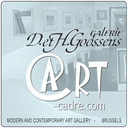
|

-
Refine your browsing experience
We can show you more items that are exactly like the original item, or we can show you items that are similar in spirit. By default we show you a mix.
This item has been added to your cart
 Friedrich HUNDERTWASSER s/n Silkscreen Night train 1978 added to cart.
Only one available in stock
Friedrich HUNDERTWASSER s/n Silkscreen Night train 1978 added to cart.
Only one available in stock
View Cart or continue shopping.
 Please wait while we finish adding this item to your cart.
Please wait while we finish adding this item to your cart.
Get an item reminder
We'll email you a link to your item now and follow up with a single reminder (if you'd like one). That's it! No spam, no hassle.
Already have an account?
Log in and add this item to your wish list.







